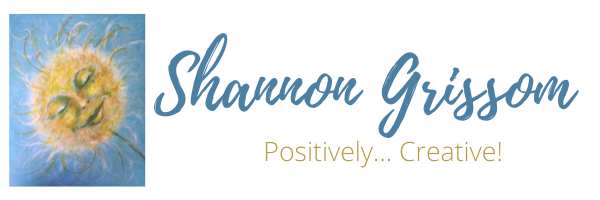WHAT YOU’LL LEARN
Why painting/playing with knives is so liberating
The difference between a painting knife and a palette knife
Plastic v. metal knives…what to use and when
Tips and techniques for using Palette, Round, Pointed, Specialty, Scraper, Spatula, and Non-Traditional implements
WHY I LOVE PLAYING WITH KNIVES
Recap~
When I play with knives, I don’t worry about painting perfectly.
Magical things always happen.
Clean-up is soooo easy!
The texture is apparent … or not, depending on how you use the knives
With practice, you can place clean color over wet or dry paint.
It’s forgiving. When I take it too far, I can scrape it off and keep going!
Because of the thicker application of paint, I can use knives to paint over work that didn’t turn out as planned, and there will be no ghosts/evidence of the previous painting! (Unless, of course, you want the ghosts to show 😉
Plastic v. Metal Knives
What’s the difference between plastic knives and metal knives?
Recap~
Plastic Knife Pros:
They are inexpensive. They play well with water media as they won’t corrode and their single-mold construction ensures they don’t come apart.
Plastic Knife Cons:
There’s always residue. They don’t wipe clean. Also, they might not fall apart, but they sure do break easily.
Metal Knife Pros:
- They are sturdy and hold up to a lot of abuse.
- Sheer variety-there are infinitely more types of metal knives.
- They make better scrapers as the blade is thinner and more substantial.
Metal Knife Cons:
- Even with the best of knives, the blade can separate from the handle over time and must be glued back together.
What to look for when purchasing a knife:
- Choose a flexible blade.
- Check the label to make sure it’s made of stainless steel.
- Test them at the art supply store so you can see which weight you prefer
Painting v. Palette Knives
Recap~
What’s the difference between a painting and a palette knife? And is there a difference? Well, palette knives usually have a round shape and a long straight, and blunt blade. They’re typically used for mixing or scraping. Painting knives have angular shapes, shorter blades, and they’re sharp. They have a trowel shape, so your knuckles don’t get in the paint. (Likely story.) They are typically used for painting and not mixing. That being said, I break all rules. I use painting knives for mixing and palette knives for painting. Use what you have, and be creative.
Pointed v. Rounded Knives
Recap~
Pointed and rounded are my go-to knives. If I could only have two knives, I’d have one of each.
Rounded knives are great for organic shapes, dabbing, and blending. They are the knife equivalent of a filbert brush.
Pointed knives are typically used for short strokes, broken color, and line work. They are angular and really good for getting into tight spots. Pointed knives are the knife equivalent of a round brush.
Square and Spatula Knives
Recap~
Square knives are great for geometric shapes. Watch out for the sharp points on these!
These are the knife equivalent of a flat or square brush.
Spatula knives are great for quickly blocking in and blending large masses of color.
Specialty Knives
Recap~
Looking for some interesting effects? Specialty knives can create all manner of textures.
Specialty knives come in all shapes and sizes. Their interesting cutouts are good for dragging, stamping, and pouncing.
Things I learned along the way: They work best when used with abundant wet paint. Try painting over a toned surface or over a painting that you want to discard so that when you drag the knife, color is still evident from the bottom layer. If you are afraid of “wasting” a lot of paint before you are comfortable wielding these wild things, try mixing the color(s) that you will use later. Spread it on your palette, and drag the knives through it to see what you can create. Once finished, you can scoop up the paint and use it on a painting. Note: This works well with oil paint…acrylic paint..not so much… they dry too fast. That being said, I believe there is no wasted paint. No matter what happens during your painting session, every moment you spend at the easel makes you a stronger artist.
Scapers and Non-Traditional Tools
Recap~
SCRAPERS
I began using scrapers and putty knives several years ago when an artist friend challenged me to create an entire painting with a 4″ putty knife. I loved it so much I kept the painting for myself 🙂 Of course, putty knives/scrapers are great for scraping, but they are also good for large blocks of color and blending. I love that you can use the edge for sharp lines.
NON-TRADITIONAL TOOLS
When I paint with a brush, I’m fairly traditional. But when I get out the knives, I tend to loosen up a bit. I’ve tried dental floss, sculpting tools, ice tea spoons, steak knives, chopsticks, spattering tools, and toothbrushes. Hey, use whatever sounds like fun at the moment!
WHAT’S NEXT?
Thanks for joining me for this introduction to Palette and Painting Knives!
Now you have a basic understanding of these knives. Yes, there are a lot of knives out there, but you don’t have to go out and buy a zillion of them! I get most of my work done with just two of them!
Be sure to subscribe to my monthly newsletter. (There’s a box at the bottom of this page to do just that!) And don’t forget to subscribe to my YouTube Channel to get the latest tips and inspiration!
Happy Painting!
